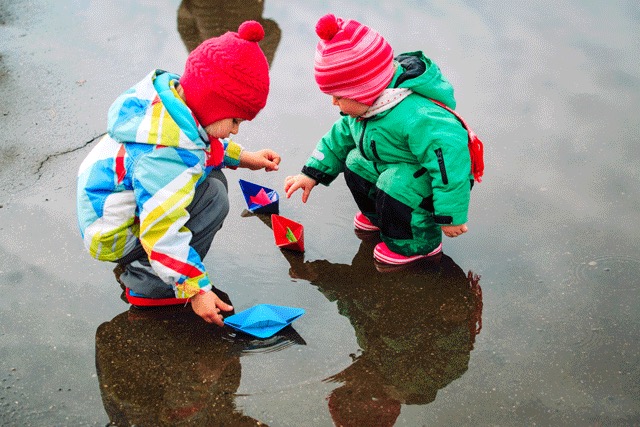In May 2014, my colleague Lilian Katz and I participated in the World Forum on Early Childhood Education in San Juan, Puerto Rico. It was an extraordinary gathering, with more than 800 delegates from 81 nations.
In one session, Amrita Jain, a delegate from India, spoke of her work with a “mobile crèche” program, which provides care and education to children in impoverished areas. (The Stars Foundation gave its 2013 Health Impact Award to the Mobile Creches program.) Parents in those communities generally believe that the only way out of severe poverty is education—that is, rote learning of skills related to reading and so on. Eager for their children begin schooling, many of the parents did not embrace the emphasis on play in the mobile crèche model.
Ms. Jain described two strategies for helping parents think differently about play. One strategy involved setting up game stations outdoors and inviting adults to play board games. People enjoyed participating. Afterward, staff would ask them what a child might learn from the games. Many of them could see that the games might help children in school.
The second strategy involved going into the communities with a “storybox”— a multipanel display board illustrating the story of a mother desperate for her beloved little boy to get an education. She sends him off to the local school, but he returns because the teacher refuses to teach him. The mother approaches the teacher, who explains that the boy is too young and needs time to play. She protests, but to no avail. That night, in a dream, a beautiful bird takes her on a journey, showing her how play can prepare children for schooling and for life. This kind of storytelling, in line with Indian oral traditions, is considered more effective than simply telling people why children need opportunities to play (as we tend to do in the United States).
Ms. Jain told us that many of the adults who heard the story or played the games spoke of wishing they could have played more as children—an insight that led to deeper appreciation of what the mobile crèches were doing. (The storybox was re-created as a very appealing video for wider distribution.)
Later, a delegate we met from Kenya spoke of how hard it has been to convince parents there that children should play. Like the Indian parents Ms. Jain encountered, they believe that play distracts children from what they must do to get out of poverty and into a better life.
All this made me think about adult attitudes toward play in the United States. Our culture isn’t completely play-averse. Young children don’t have to earn money to help support their families, and most parents are okay with their children having time to play outside of school. Still, some parents (and some policymakers) question letting preschoolers “just play” rather than sitting them down for “the A-B-Cs and 1-2-3s.”
I wondered: What more could we do to “get the word out” about the fact that play and learning are not mutually exclusive? Maybe a storybox isn’t necessary (though the idea has possibilities). But perhaps some storytelling, some testimonials, can be as persuasive as a list of reasons for children to play. And a community game event might be a venue for parents to get back in touch with the value of play in their lives.
What has helped you successfully advocate for play? We’d like to hear from you!

Jean Mendoza
Jean Mendoza holds a Ph.D. in curriculum and instruction from University of Illinois, a master’s degree in early childhood education from the University of Illinois, and a master’s in counseling psychology from Adler University of Chicago. She served on the faculty of the early childhood teacher education program at Millikin University and worked with children and families for more than 25 years as a teacher, social worker, and counselor. She recently collaborated with Dr. Debbie Reese on a young people’s adaptation of An Indigenous Peoples’ History of the United States (by Roxanne Dunbar-Ortiz). Her long-standing interest in children’s literature is reflected in her reviews of children’s books with Native content, which have appeared in A Broken Flute and on the blog American Indians in Children’s Literature. Jean and her late husband, Durango, have four grown children and six grandchildren. She lives in Urbana, Illinois.
Biography current as of 2021
IEL Resources
- Resource List: Children’s Play – More than Fun and Games
Web Resources
-
Mobile Creches
Source: Mobile Creches
Mobile Creches is an organization working for the right of marginalized children to early childhood development.
-
World Forum Foundation
Source: World Forum Foundation
The mission of the World Forum Foundation is to promote an ongoing global exchange of ideas on the delivery of quality services for children in diverse settings.


